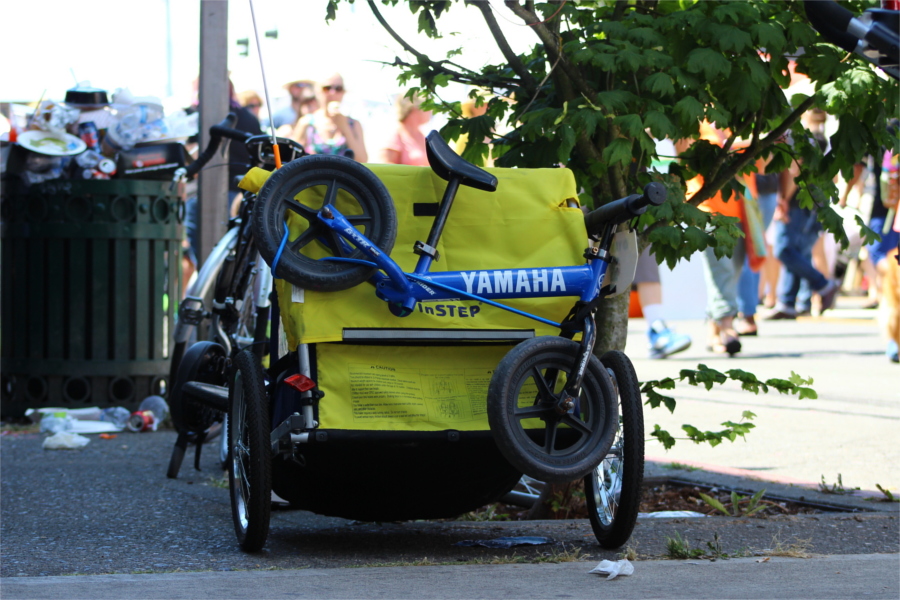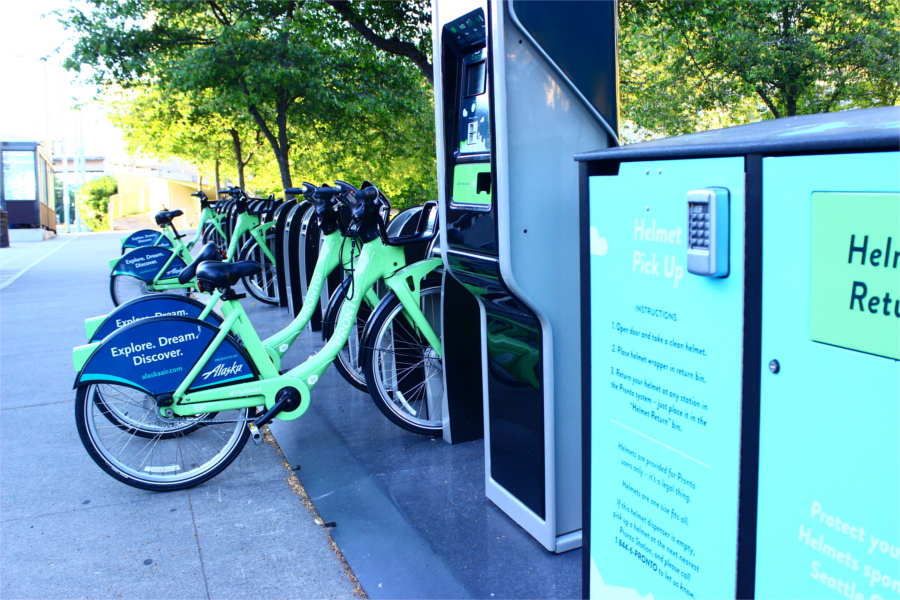
The U.S.A. – A lot of people around globe wish to visit.Back in Nepal, sitting in any tea shop or some public places, lots of people talk about U.S. and dreams to get DV Lottery. The real journey to visit the dreams of several youth, The U.S.A., began with landing at Philadelphia airport. Though I couldn’t feel the actual pleasure of being in America as it was just a transit, but reaching Seattle, I experienced some strange and astonishing observations.
Seattle based Australian environmental scientist Steve Burke (54 years) loves to travel across the world. He has visited Nepal more than 5 times and he has had some strange experiences. When he wrote to me, he recalled being in a rickshaw race down Kantipath (Kathmandu Valley) in 1984 as his one of the most strange experience. He also mentioned yet another strange experience ‘While traveling overland to Tibet from Nepal, I was locked out at the border gate for 12 hours”.
Differences between culture, etiquette, ruling and supervision can surprise and attract people to travel here. According to the World Tourism Organization, between the four month of May-August 2015 more than 500 million tourists are expected to travel abroad.
Here are few thing that was strange to me.
Sun stays too long

When we landed at Seattle Airport, American Airline announced “The time is around 8:00 PM”. But I was completely surprised and shocked. Looking out from the window, the sun was completely visible in the sky. I thought there might have been some technical error. So, I asked a person nearby me “What time is it now?”. “It’s 8 PM”, he replied . “But the sun is yet to set down?” The guy gave me me a suspicious look and said “This is seattle, man”.
In Nepal, sun sets down around 5 or 6 PM. At 8 in the night, most of the people go back to their home from office . The time zone difference between Nepal and Seattle is 12 hours & 45 minutes.
Follow Traffic Rules

Here at The U.S.A., everyone is always in a rush for something: How to get to their destination before or on time?, How to accomplish the tasks before the deadline? and so on. I guess, these are the question, the locals and also visitors like us think about the most. Everyone walk as if it’s a race or some marathon. But when the question comes about traffic rules, they don’t care about all these. Once the traffic lights shows red, everything stops for a while. Vehicle gives priority to pedestrian , Pedestrian do care about the traffic signal, By-cycle lane are never used by the car and others vehicle, parked car driver always pay parking charge even if there is no any police official to enforce them to follow the rules.
But in most of the south Asian country like India and Nepal most of the people walking or driving on the road think it as if it’s a private property. Back to Nepal, the larger cities like Biratnagar lack the the traffic signal/lights. Even in the capital city, Kathmandu, we can often see the traffic police clearing the traffic jams manually. Moreover, we hardly care of the traffic rules. Well, I’m not discouraging anyone or demoralizing rather showing the truth so that we can develop these things in future.
Carry the leftover
We were at an Indian Restaurant, Seattle. Almost we’d finished our dinner and were about to leave when a waiter came with a box and handed it to me. Feeling awkward, I saw around at other tables and very surprised I found people packing up the leftover foods from their plates in the box. Being amazed, I asked one of my lady friend about the same. In reply she asked me a question, “Don’t you guys take the leftover food with you?”
Back to the restaurants in Nepal, we throw the leftover foods in dustbin. Neither does any waiter comes with a box nor we approach for the same. We feel shame to take it back to home. Some four years back, I was in a restaurant with my friends in Nepal. My friends had packed up the left food and kept in my bag. I was terribly ashamed to take it with me as we consider the same activity as rudeness.

Baby cart holding cycle on its back in Tacoma (Photo by Saroj Karki)
B-Culture !!!
I bought my first cycle for 7$ (Nrs. 700). Begun to ride cycle back from my school days, I continued it during my days of Journalism. Working as Journalist, I used it collect news from different places. Later, due to some health issues, I left riding bicycle. In fact its around 3 years that I left ridding it. My days at Seattle made me recognize all those older moments.
Here, even the cars, Jeeps, Trolley Buses have set aside the places for keeping the bicycle. Working people often use bicycle to go to their offices, so the offices generally keep the parking places for bicycle. In Nepal, we used to lock the cycle and keep the key with us. But here, finding people carrying the seat or one of wheels and parking the cycle was one of the thing that amazed me the most. As similar as ATM, one can easily ask for cycle by using the machines kept on the streets.

What is Right – Is Right
“Always use your left side, either while walking on the streets or driving a vehicle”, this is what we were taught in our schools days and even today we teach our off-springs. In Nepal, we use this same rule.
But after my visit to America, I found that if we follow the same traffic rules as Nepal then we may have to lose our lives. During my initial days here, I found it very hard to follow the rules and regulations because the rule here was just opposite to what we follow in our country. We had to use the Left side of the road while walking or driving. Moreover, even the vehicles have driving belt on their left. But the driver used to drive from right, which totally different from what we see often. I was very surprised to see this.
Nepal along the South Asian countries, Australia, Africa & South America, there is this traffic rule of “Left Hand”. In the world, only the 10% of the countries or places use the traffic rule of This .and the rest 90% of them uses the “Right Hand” rule. In the “Right Hand” traffic rule as in USA, the seat belts are on the left side.
Travel makes you see new places, traditions, system and culture, not only see but it makes you feel, learn and build yourself. It is really obvious to be surprised by new culture and systems, may be this is why we are surprised to see the sun during Solar Eclipses, people from a very hot climatic area get surprised to see snow. This is human nature.
“The world is a book, and those who don’t travel only read one page.” As st. Augustine said, World is a beautiful book to read. Most of us make ourselves bounded within one page, are you ready to flip the pages?
This story was produced in the 2015 SUSI program.

